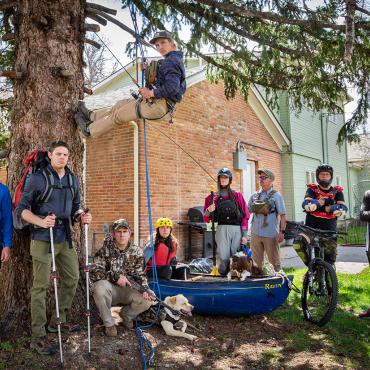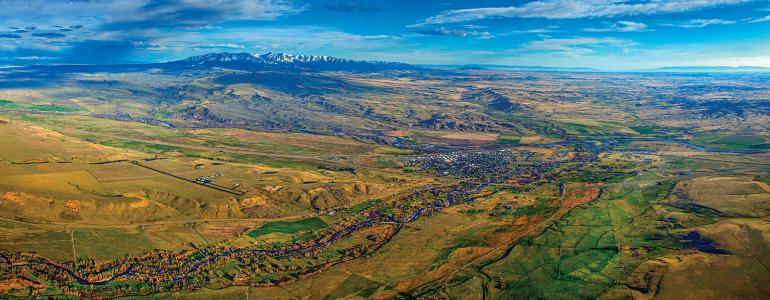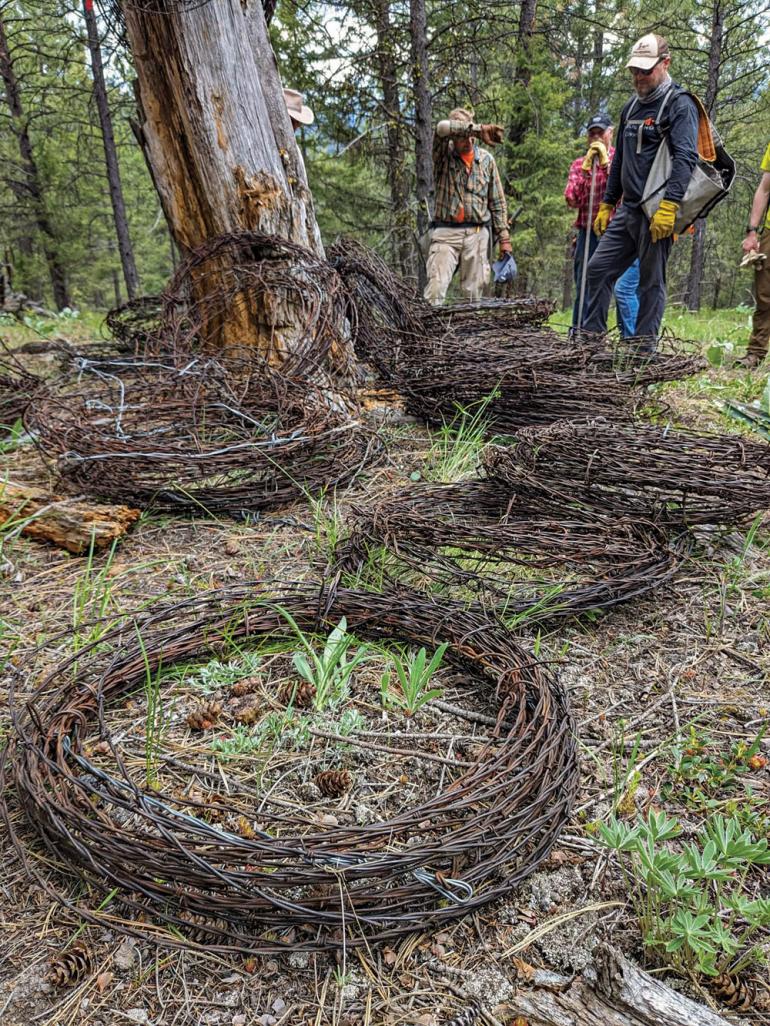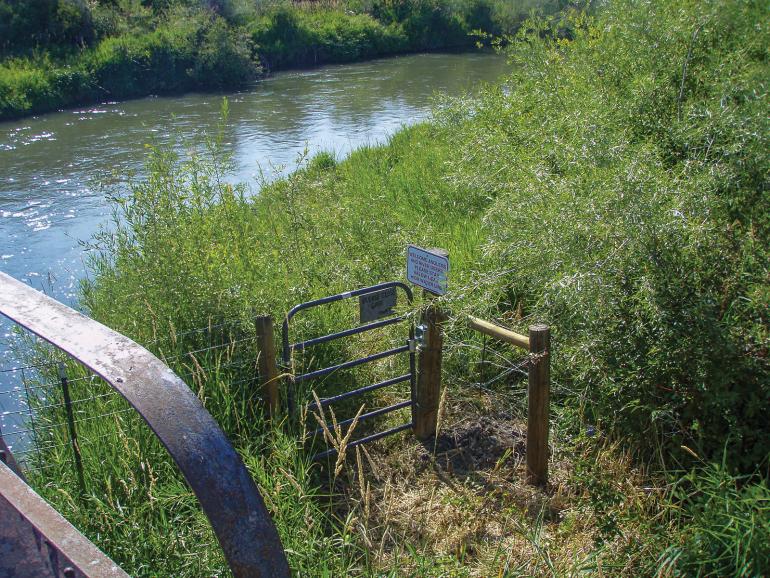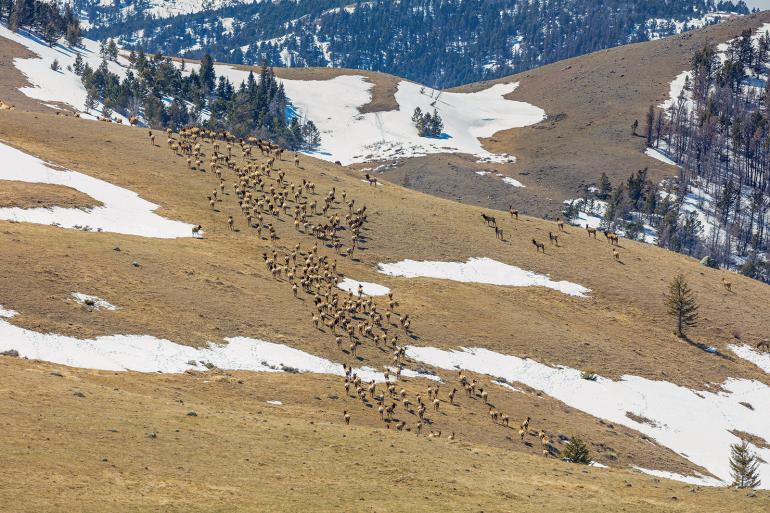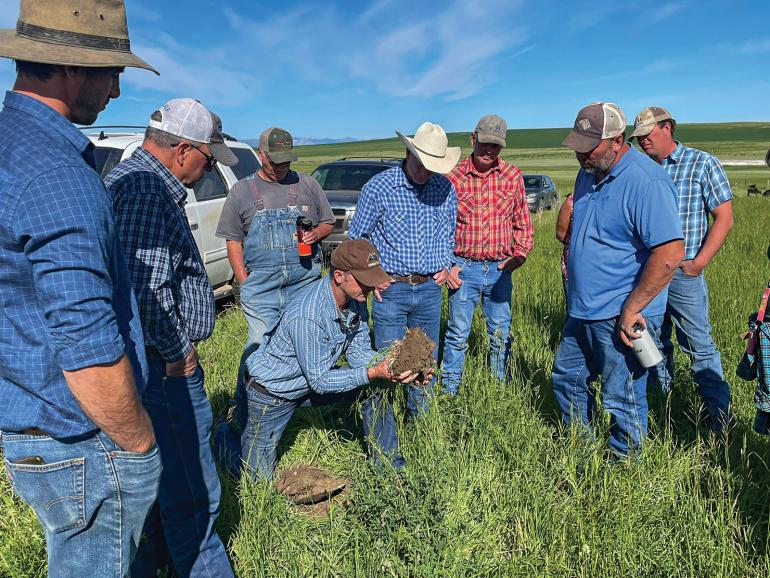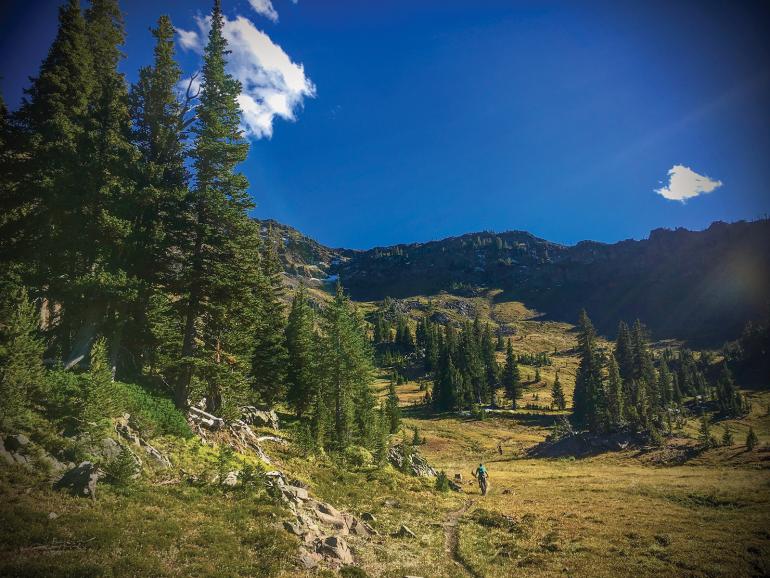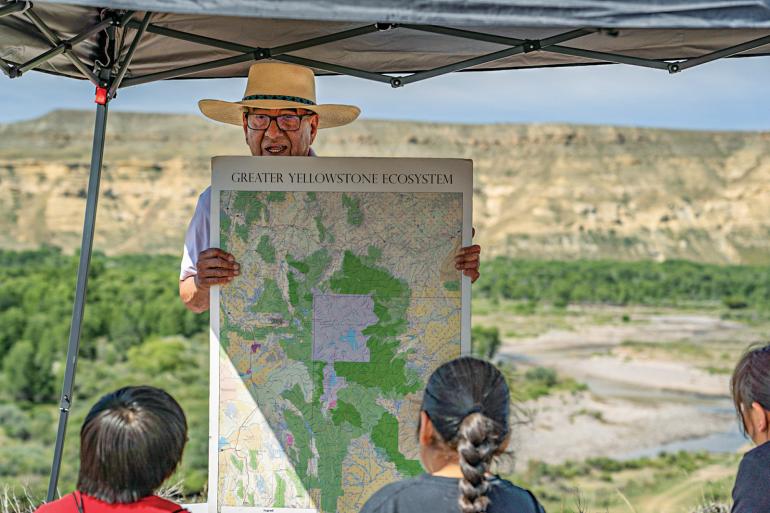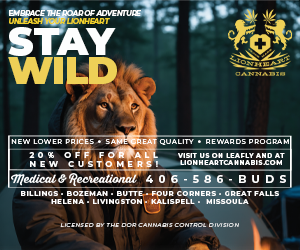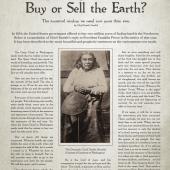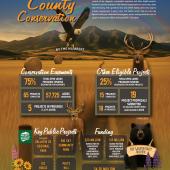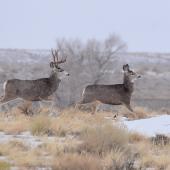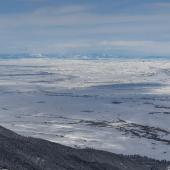Saving Space
A roundup of wildlife-oriented conservation groups.
Every year, millions of people visit Montana to experience the feelings of wonder that can only be inspired by its unique landscapes, vast wilderness, and abundant wildlife. Another million make their homes here, many for the very lifestyle offered by such close proximity to wild nature. This natural beauty and richness are what make our state beloved and admired across the nation, if not the world. But preserving these things is no mean feat. As towns & cities grow and development spreads, it takes persistent effort to maintain the fragile balance between people and nature—and to ensure that we save space for wildlife to make their own homes on this land that we all share.
Thankfully, there are numerous local nonprofits working hard to keep wild places intact and healthy, despite increasing human encroachment. The few we’ve included here are only a sampling, and although we do admit to some favoritism in our selections, we’d be remiss if we suggested that these are the only groups fighting to protect our natural heritage, in the Bozeman area and beyond. So consider this an editor’s choice of noteworthy organizations—we encourage you to support their work, as well as that of other groups not listed. Together, they’re helping keep Montana, Montana.
Backcountry Hunters & Anglers
Hunters and anglers know Montana’s public lands better than almost anyone. They’re the ones spending long, patient hours stalking through timber country, setting up camp on remote ridgelines, and driving old dirt roads to access their favorite far-away fishing hole. It’s only natural that they also want to protect these places.
The Montana chapter of Backcountry Hunters & Anglers (BHA) is an all-volunteer group of outdoorsmen and women who champion the protection of fish & wildlife habitat and non-motorized access to public lands. They’re all about keeping public lands public, wild places wild, and making sure future generations can still chase elk through roadless country and catch cutthroat in cold, clean streams.
Members of Montana BHA show up to legislative hearings, testify against bad bills, and rally support for wildlife corridors and habitat protections. When federal roadless areas were under threat last year, the group mobilized thousands of comments in defense. And when aging fences blocked ungulate migration paths, they grabbed wire-cutters and got to work. Last summer, the group removed three miles of barbed wire in the Grasshopper Valley to clear a migration corridor for big game, and they often host fence-pulls and trail cleanup events in the backcountry.
BHA has over 40,000 members nationwide, and Montana’s chapter is currently headed by board chair Jake Schwaller, a fourth-generation Montanan and practicing lawyer. Whether they’re showing up in camo at the capitol to advocate for public lands or packing out trash from a trailhead, Montana BHA continues to be a fierce protector of our wild places. To get involved or join the chapter, go to backcountryhunters.org.
Montana Wildlife Federation
Recent political events have shed light on the passion that hunters and anglers have for public lands and the impact regular folks can make when they speak up for the places they love. Organization and resources went a long way in helping hunters, anglers, and recreationists band together and make it clear that our public lands are not for sale.
One group that helped lead the charge was Montana’s oldest statewide conservation group, the Montana Wildlife Federation (MWF). Founded in 1936, MWF protects habitat and public-land access while also working closely with Montana Fish, Wildlife & Parks to ensure that hunters, anglers, and other outdoors folk are heard both at the state legislature and in Washington, D.C.
Roughly 1.5 million acres of public land are currently landlocked in Montana, and MWF partners with landowners and federal agencies to support conservation programs like Block Management. They oppose illegal road closures, fight to protect stream-access laws, support policies surrounding ethical and fair-chase hunting, and promote the use of non-toxic ammunition through educational programs on the negative impacts of lead on wildlife.
To date, MWF’s victories include helping to implement the nation’s strongest stream-access law, working toward banning confined-wildlife farms, safeguarding critical habitat, and working on key issues like grizzly and sage-grouse recovery, chronic wasting disease, wildlife corridors, and clean water.
Further efforts to protect wildlife habitat include programs such as Clean, Drain, Dry—designed to slow the spread of aquatic invasive species—and the Garden for Wildlife program, which works to transform public spaces into certified wildlife habitats. Learn more and join the fight at montanawildlife.org.
Center for Large Landscape Conservation
Natural systems that keep us and our wildlife alive & well are being pushed to a breaking point. That’s why the work of the Center for Large Landscape Conservation (CLLC) is more important than ever. Since 2007, they’ve dedicated themselves to protecting the land and repairing previous damage by improving ecological connectivity. Headquartered in Bozeman, CLLC’s impact extends far beyond the confines of southwest Montana, as they collaborate with numerous grassroots efforts to help communities around the globe protect wildlife corridors and rebuild natural landscapes. In short, their work is as expansive as the ecosystems they aim to protect.
CLLC also hosts programs such as “Wildlife Crossings Guidance” and “Wildlife & Transportation Assessment,” which provide information on highways more prone to wildlife collisions so that people can better understand how to be less destructive to local ecosystems. Moreover, they lead scientific research on wildlife movement, craft policy to advance ecological networks, and mentor emerging conservation leaders.
At the heart of CLLC’s mission is the central belief that protecting nature protects people—and that large-scale challenges require large-scale solutions. From corridors for migrating elk in the Rockies to safe passage for tortoises in Joshua Tree, the group demonstrates that protecting wildlife is not just about preserving wild places, but also about safeguarding the future of conservation efforts. As the pressure on natural systems increases, the organization’s message is clear: if we want our wildlife to survive, we must work together. Find out how you can get involved with the mission at largelandscapes.org.
Grow Wild
What began in 2004 as two local anglers pulling spotted knapweed along the Gallatin River has grown into one of southwest Montana’s most hands-on conservation nonprofits. Today, Grow Wild is a driving force for ecological stewardship in the Upper Gallatin Watershed—conserving native species, restoring critical wildlife habitat, and educating the community about the threats posed by invasive plants and aquatic invaders.
Based on a simple yet powerful belief that healthy ecosystems depend on informed and engaged communities, Grow Wild blends science, outreach, and good old-fashioned elbow grease to achieve their goals. Their staff and volunteers tackle noxious weed infestations that degrade bighorn sheep habitat, plant native & pollinator-friendly gardens, and collaborate with landowners to manage land through a conservational lens. Each summer, their mobile education trailer brings hands-on science and conservation messaging to local schools, trailheads, and community events.
In partnership with MSU and the Natural Resources Conservation Service, Grow Wild also contributes to research aimed at protecting biodiversity and improving habitat resilience. Whether it’s teaching clean recreation practices at busy boat ramps or organizing neighborhood weed-pulls, the group emphasizes that conservation is a collective effort. Its work thrives on collaboration—between native plants and wildlife, public and private lands, and most of all people who give a damn and know how to show it.
As they celebrate 20 years of impact, the Grow Wild team remains focused on the horizon and their ultimate goal: a landscape of thriving, native species and clean rivers. From bluebunch wheatgrass to bighorn sheep, healthier landscapes begin with local action. Learn how to get involved and lend a hand at growwildmt.org.
Gallatin Forest Partnership
At the Gallatin Forest Partnership (GFP), teamwork makes the dream work. This group includes representatives from Wild Montana, the Greater Yellowstone Coalition, Southwest Montana Mountain Bike Coalition, and the Wilderness Society (to name a few), and they’re all working together for a common—and public—good.
The good in question? 250,000 acres of land across the Gallatin and Madison ranges that includes prime wildlife habitat, pristine water, and near-endless recreational opportunities. The GFP aims to protect it for generations to come using a patchwork of different land-use designations that collectively safeguard those resources in the face of rapid population growth.
The GFP rolled all these protections into its landmark piece of proposed legislation, the Greater Yellowstone Conservation and Recreation Act, and here’s just a taste of what it includes: permanent protection of the Hyalite-Porcupine–Buffalo Horn Wilderness Study Area, prohibition of new trail construction and logging in the high alpine of Hyalite Canyon and Bozeman Creek, two new mountain-bike trails in the West Pine region of the Gallatin Range, a new protected Wilderness area on the Gallatin Crest, and a whole lot more. All told, 124,000 acres of newly designated Wilderness right in our back yard, plus 70,000 more acres of official Watershed Protection and Recreation Area.
Unlike the protections afforded under the current Forest Service management plan, these protections would be permanent, hopefully dummy-proofing the wellbeing of our environment from short-sighted politicians and bureaucrats.
The GFP’s patchwork approach is an effort to reflect the interests of everyone with a stake in the Madison and Gallatin mountains. To learn more or join the cause, check out the Gallatin Forest Partnership and their proposal at gallatinpartners.org.
Greater Yellowstone Coalition
When discussing or visualizing land today, our focus often lies on who owns or controls it. But Native Americans had a much different view of land ownership than we inherited from European settlers. They believe the earth to be a living being, much like a relative, that should be cared for rather than owned.
Continuing this spirit of harmony and stewardship, the Greater Yellowstone Coalition (GYC) includes Indigenous tribes in land management, and envisions a future where wild nature thrives, human & wildlife communities coexist in balance, and diverse voices work together to preserve cultural landscapes for current and future generations.
This regional nonprofit, founded in 1983 and headquartered in Bozeman, also has offices across Idaho, Wyoming, and Montana. Its mission is to protect, restore, and maintain wildlife habitats in the Greater Yellowstone region by defending wild rivers, maintaining open landscapes, securing vital habitat, preventing wildlife conflicts, protecting iconic species, and elevating tribal interests and rights.
That mission has been accomplished with some big wins throughout the years, including the removal of gold mines bordering Yellowstone National Park; the recovery and restoration of wolves, grizzly bears, and bison; the Yellowstone Gateway Protection Act; and protection of the Snake River Watershed.
While few of us wish to encounter animals like grizzlies or wolves up close, there’s no doubt that these powerful creatures hold symbolic weight in American identity—from being revered as spiritual beings and teachers, to being featured on flags or state emblems. The presence of these mystical animals in our national parks and wildlands continue to shape how we think about nature and cultural preservation. So, if you’re looking for ways to help, be sure to check out the GYC’s action center or learn more at greateryellowstone.org.

